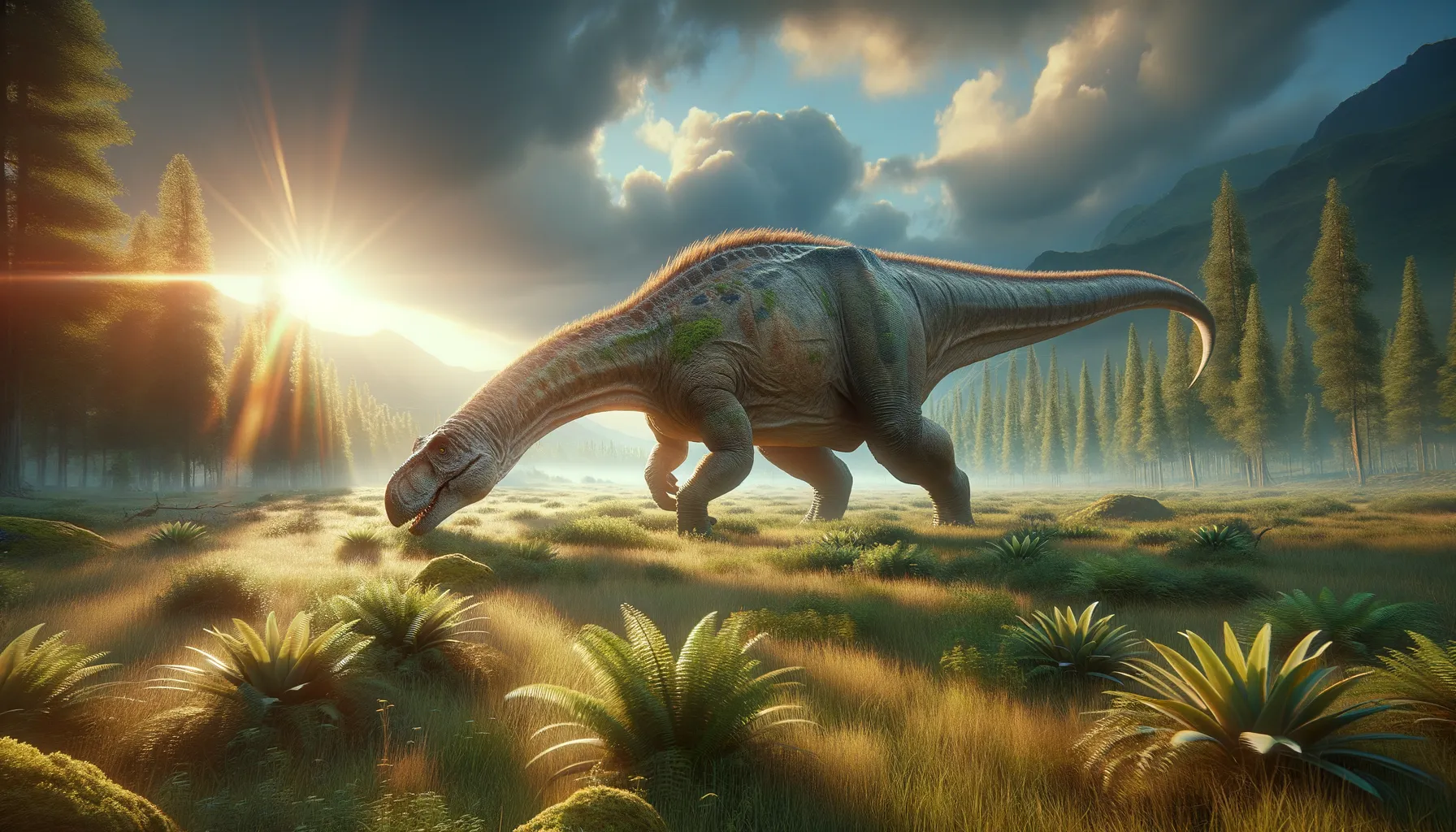
Eupodosaurus
Majestic giant of the ancient world.
Period
triassic
Length
Measuring up to 10 meters in length.
Height
Stood about 3 meters tall at the hips.
Weight
Weighed approximately 4 to 5 tons.
Eupodosaurus was a large herbivorous dinosaur known for its distinctive long neck and large, bulky body. Living during the Jurassic period, it roamed vast plains and forests. This dinosaur played a crucial role in its ecosystem, influencing the vegetation with its grazing habits. Its fossils provide invaluable insights into the life of prehistoric herbivores and their environmental adaptations.
Diet
Eupodosaurus primarily fed on plants, including ferns and cycads. Its long neck allowed it to reach high vegetation, and its strong jaw was adapted for stripping leaves and branches.
Hunting
Being a herbivore, Eupodosaurus did not hunt for food. Instead, it moved steadily through its environment, using its size and presence to deter predators.
Environmental challenges
Eupodosaurus faced challenges such as fluctuations in climate and competition for food resources. Natural disasters like volcanic eruptions could have affected its habitat. Predatory threats from larger carnivores were a constant concern, although its size offered some protection.
Speed
Moderate pace, suitable for a large herbivore.
Lifespan
Estimated to be around 70 to 80 years.
First discovery
Unearthed in the late 19th century in North America.
Fun Facts
- Eupodosaurus is believed to have been a small, bipedal dinosaur, which means it walked on two legs, like a modern bird.
- Its name 'Eupodosaurus' combines Greek words meaning 'well-footed lizard,' hinting at its agile nature.
- Fossils of Eupodosaurus have been primarily found in what is now North America, giving paleontologists clues about its habitat and lifestyle.
- Scientists think that Eupodosaurus might have been an herbivore, feeding on plants that grew during the late Jurassic period.
- The study of Eupodosaurus helps researchers understand more about the diversity and evolution of early dinosaurs.
- Eupodosaurus is part of a group called Theropods, which also includes the famous Tyrannosaurus rex.
- Even though Eupodosaurus was much smaller than many other dinosaurs, it played an important role in its ecosystem, much like smaller animals do today.
Growth and Development
Young Eupodosaurus likely experienced rapid growth in their early years to reach sizes capable of deterring predators. This growth was supported by a stable and nutritious plant-based diet. Their development involved gradual increases in size and strength, preparing them for adult life.
Habitat
Eupodosaurus thrived in lush forests and open plains, regions rich in vegetation. These areas provided the necessary resources for its grazing lifestyle. Seasonal changes influenced its movement, as it possibly migrated in search of better food and environmental conditions.
Interaction with other species
Eupodosaurus coexisted with other plant-eating dinosaurs, sometimes competing for the same resources. It was a part of a complex food chain, interacting with predators indirectly by providing a food source. Symbiotic relationships with other smaller creatures might have occurred, such as birds feeding on insects found on its skin.
Natural lifespan
Eupodosaurus likely lived up to its 70s or 80s in a stable environment.
Reproduction
This dinosaur reproduced by laying eggs in nests. It is likely that the nests were built in secluded areas to protect from predators. Parental care is hypothesized to have occurred, with adults possibly guarding the nests until hatching.
Social behaviour
Eupodosaurus may have lived in herds, offering protection against predators through numbers. Social interactions were likely based on age and hierarchy, similar to modern-day herbivores. Communication was probably achieved through vocalizations and body language.
Fossil locations
Fossils of Eupodosaurus have primarily been found in North America, particularly within regions of the western United States. Finds often occur in areas that would have been conducive to its grazing lifestyle. These locations have provided a wealth of information on the Jurassic landscape.
